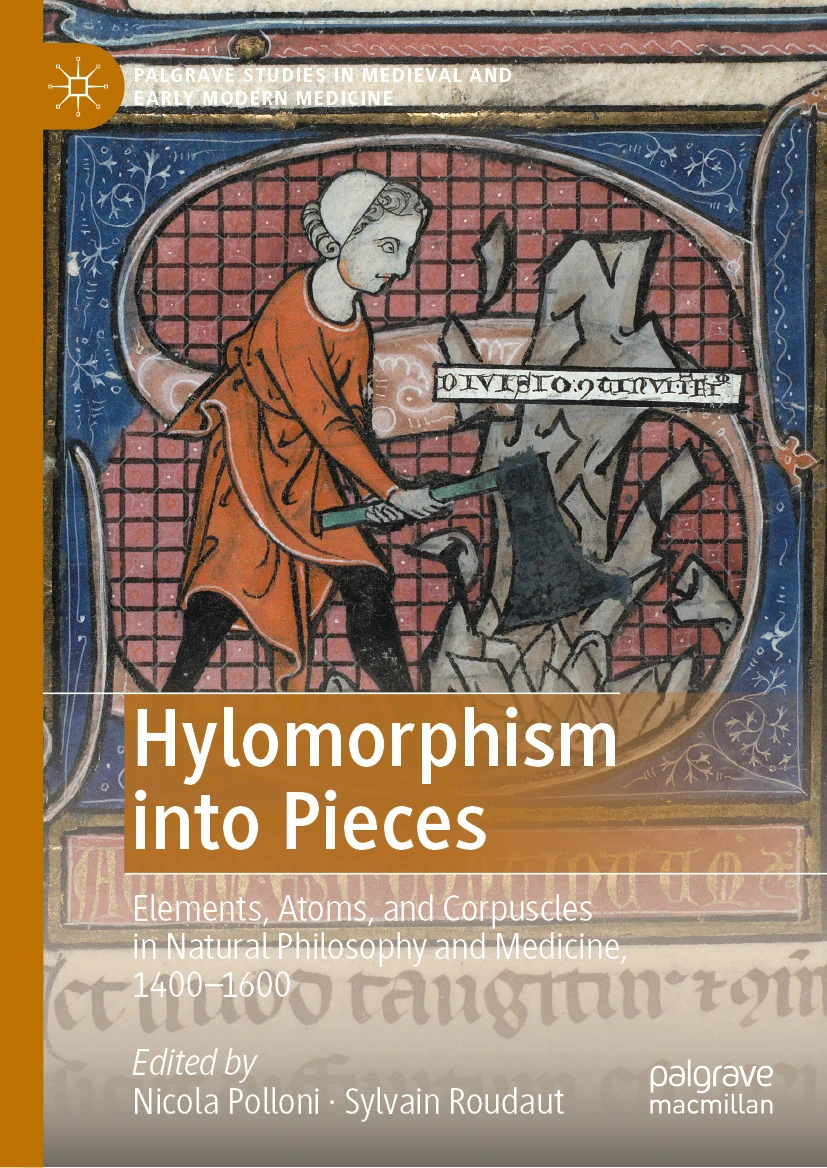
Editors: Nicola Polloni (University of Messina) & Sylvain Roudaut (KU Leuven)
Publisher: Palgrave Macmillan, 2024
Focussing on late medieval and early modern philosophy and medicine, this edited collection explores the replacement of hylomorphism—the dominant theory of bodies in the Middle Ages—with new theories of matter such as corpuscularianism and atomism at the dawn of the Modern period. Together, the contributions offer a comprehensive overview of a crucial historical moment for the history of philosophy and science: the rise of a new conception of matter against declining scholastic theories. They highlight the key aspects of this historical transition by investigating precise concepts that were central to this shift, namely the notions of elements, atoms, and corpuscles.
Shedding light on the gradual process by which hylomorphism was eventually replaced by a more positive conception of matter and natural processes, the book demonstrates how many thinkers of the late medieval period were willing to integrate new theories into the conceptual framework of Aristotelian natural philosophy, and tried to harmonise them with the traditional concepts and axioms of scholastic doctrines.
Showing how these conceptual innovations resulted from a complex interaction between different fields of late medieval and early modern knowledge, the authors bring together research from the disciplines of metaphysics, medieval philosophy, and medical science. Providing an overview of an important theoretical shift in the transition from the Middle Ages to the Modern Era, this book is essential reading for scholars of philosophy, and historians of medieval and early modern science and medicine.
Contents
- Hylomorphism into Pieces? Introductory Remarks – Nicola Polloni and Sylvain Roudaut
- Atoms, Minima and Points: Democritean Corpuscularism in the Thirteenth Century – Aurélien Robert
- The ‘No-Frills’ Doctrine of Minima Naturalia in the Latin Middle Ages and in the Renaissance: A First Exploration – Roberto Zambiasi
- The Changing View of Successive Entities in the Fourteenth Century: Peter of Mantua on Matter and Form – Henrik Lagerlund
- Unity Out of Multiplicity: Nicholas of Cusa’s Theory of the Elements – Claire Murphy
- Pietro Pomponazzi and the Debate on the Four Elements – Luca Burzelli
- Points of Form and Other Minima: Hylomorphism and Indivisibles in the Circle of John Mair – Sylvain Roudaut
- Late Scholastic Thomism into Pieces. Hylomorphism and Indeterminate Dimensions in Domingo Báñez’s Commentary on De generatione et Corruptione – Russell L. Friedman
- Francisco de Toledo on Elemental Mixtures – Nicola Polloni
- Prime Matter Is Three-Dimensionality. The Debate on the Extension of Prime Matter from Zabarella to Galileo – Fabrizio Bigotti
- Jacob Schegk, Simplicius and “Anaxagoras the Atomist”: Aristotelian Commentaries and Renaissance Corpuscularism – Hiro Hirai
- Rodrigo de Arriaga’s Substance Trialism – Erik Åkerlund
- Primary Sources Index
- Secondary Sources Index
Source: https://link.springer.com/book/10.1007/978-3-031-60927-5